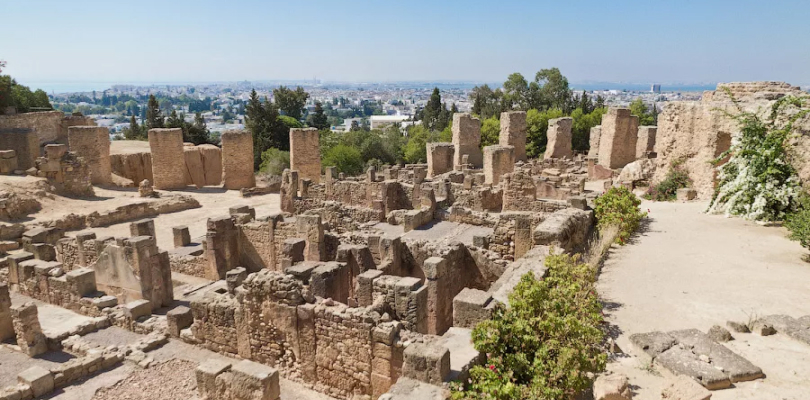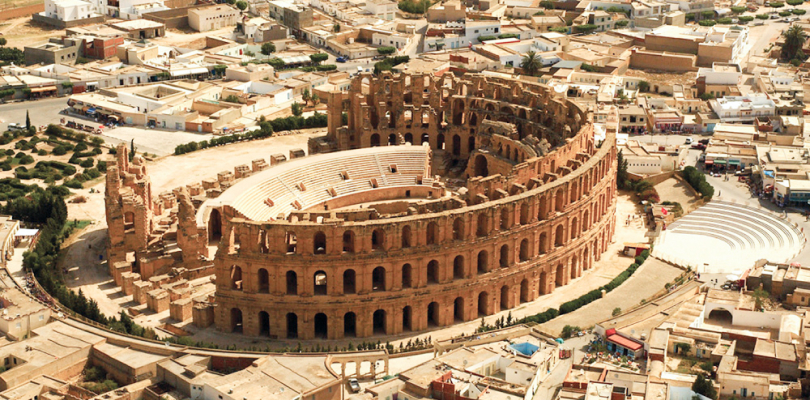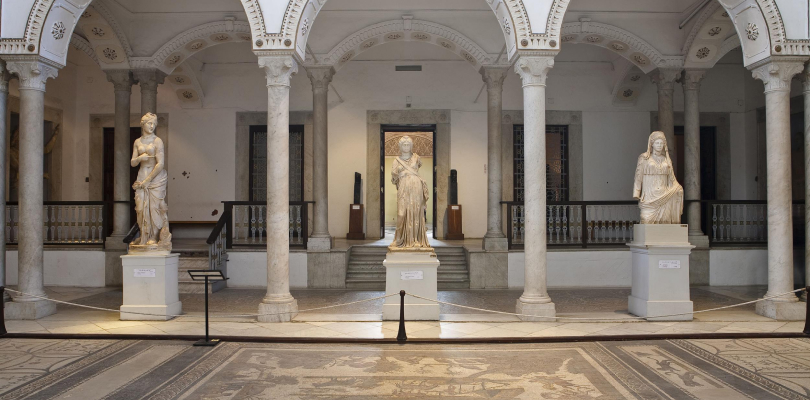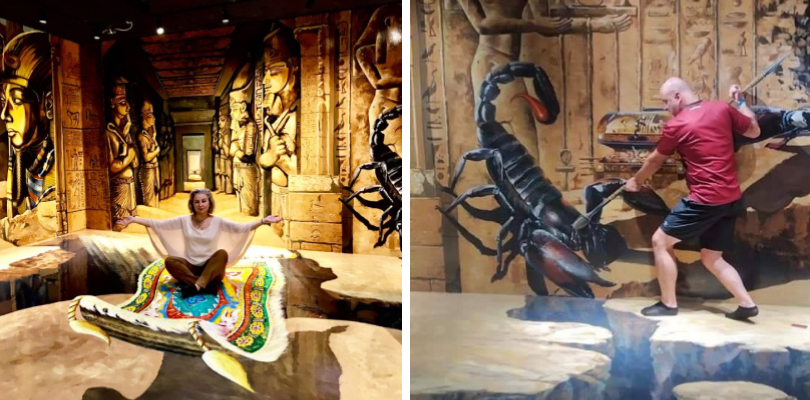Tunisia is an amazing country for travel lovers. Warm azure sea and beaches with snow-white sand that so pleasantly caresses bare feet. Thickets of date palms and dense coniferous forests, where the air is filled with delicate, pure aromas. The hot dunes of the Sahara, whose fantastic outlines excite the imagination…
But the unity with nature, immersion in the unique ecosystem of Tunisia, is not all that is definitely worth coming here for!
The remnants of former greatness of Phoenician Carthage and Ancient Rome, the powerful walls of medieval fortresses, the mysterious labyrinths of the streets of old Arab cities – many attractions of this North African country are included in the list of the World Heritage Sites and are protected by UNESCO. There are really interesting places in Tunisia that deserve the attention of the most discerning travelers!
Byrsa Hill: Visiting Princess Elissa
The place where the Phoenician state was founded, which for six centuries had been controlling the entire Mediterranean basin. Here, on Byrsa hill, in the 9th century BC the runaway daughter of the Tyrian king, Princess Elissa, built the citadel that gave rise to the great Carthage, whose glory has been known through the centuries.
However, it’s not just about memories. On the slopes of Byrsa Hill, archaeologists have also discovered something more substantial, namely, a miraculously surviving quarter that was once part of a Phoenician settlement.
Here you can see the remains of houses, a crossroads where once it was difficult to move among hurrying passers-by, and even … one of the residents of the city, “the young man of Byrsa”! To learn more about an amazing archaeological find and other evidence of Phoenician civilization on the famous hill, read here.

The Baths of Antoninus: ancient bath secrets
Going to the baths to read is a strange idea, isn’t it? But not for the ancient Romans!
To learn all the bath secrets of the citizens of the once great empire, it is worth taking a look at the baths of Antoninus Pius, named after one of the rulers of glorious Rome. The thermae are adjacent to the remains of an ancient Roman basilica, an aqueduct and an amphitheater, the venue for gladiatorial combats and executions of early Christians. Every stones here breathes history.
The features of the heating system of the baths, the rules for visiting them for men and women, the purpose of “hot rooms” and a luxurious courtyard – these things will be explained to tourists by experienced guides conducting excursions to the Baths of Antoninus Pius, another Tunisian attraction which must be seen. We have collected for you all the details about this interesting place in the article.
El Jem: gladiatorial combats and the Vienna opera
The amphitheater in El Jem is a great construction, which is slightly smaller than the Colosseum, located in Rome. However, it should be noted that the walls of the Tunisian amphitheater look better than those of its Italian counterpart, it is the best preserved monument of this kind in the world.
Here you can feel like a spectator of the bloody performances of a bygone era – part of the seats where the ancient Romans once were seated has been restored. The arena where the combats took place is perfectly visible from the seats. In the center of the arena there are hatches for ventilation of underground rooms and the exit of animals and condemned people.
Next to the amphitheater, history lovers will find the Archaeological Museum with the rarest exhibits, including a famous owl mosaic with the inscription “the birds are torn apart by envy and the owl doesn’t care”. Learn more about this and why the soloists of the Vienna Opera, the Bolshoi Theater and La Scala regularly visit the amphitheater of El Jem here.

Sousse, Hammamet, Monastir: fairy-tales of the Arab medinas
You can feel the mysterious atmosphere of the East and feel like a character of Scheherazade’s fairy tales by walking through the medina of almost any Tunisian city. There’s the smell of aromatic spices in the air, and every turn of the narrow cobbled streets promises amazing discoveries and adventures.
Tourists who will go on an excursion to the medina of Sousse will definitely have unforgettable experience as this place is in the list of the UNESCO World Heritage Sites. You can find more about Sousse Medina here. Or you can go to the medina of Hammamet with its fortress, constructed in 9th-10th centuries AD, featuring the walls 13 meters high, a watchtower and real cannons displayed in the courtyard. Learn more about the resort-town of Hammamet and its attractions here.
And, of course, we should not forget about the birthplace of the first President of Tunisia, Monastir– and the medina of this city. Come here to feel the atmosphere of the past, seeing the cells of warrior monks and the stones under which the remains of the fortress defenders lie at rest. You can find out more about the sights of Monastir and the places, which can be interesting to visit, here.
Bardo National Museum: Roman statues and a harem
An important sixth place in the list of the World’s most beautiful museums, made by one of the oldest Italian newspaper Corriere della Sera, is occupied by Bardo National Museum, located in one of the suburbs of Tunisian capital.
The exhibits, illustrating the world of antiquity and immersing the museum visitors in Islamic art, archeological finds raised from the bottom of the sea – there is really something to see here. Bardo National Museum is famous for its really huge collection of Roman and Byzantine mosaics, as well as the collection of Roman statues, which are exhibited at no less than fifty of its halls and galleries.
Special attention in the exposition is paid to the peculiarities of everyday life of that times. For example, the life of women in a harem. In some rooms, the presence of concubines is literally felt – there are four-poster beds, decorated with silk linen, the feeling of bliss and luxury is in the air. Read more about the Bardo Museum in this article.

Sousse 3D Museum: walking on the abyss
Of course, travelling around Tunisia it is not necessary to look only in the past. You can visit some places of a completely different kind. For example, one of the largest and most impressive 3D museums in the world, which is located in the charming resort city of Sousse.
Guests of the amazing museum have the opportunity to plunge into virtual reality, to become a part of it. Having tea with the characters of children’s books or hugging wild animals, swimming in the ocean teeming with sharks, walking along the edge of the abyss or space travelling – you just need to choose!
This place will definitely not let anybody to stay indifferent – neither adult tourists nor kids. And here we will tell you exactly how the immersion into unusual worlds happens.


